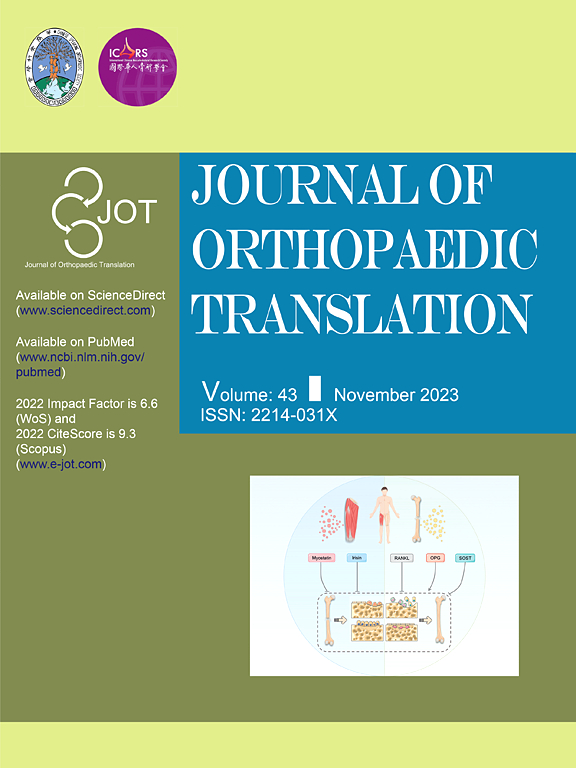Mitochondrial Transplantation/Transfer: Promising Therapeutic Strategies for Spinal Cord Injury
IF 5.9
1区 医学
Q1 ORTHOPEDICS
引用次数: 0
Abstract
Spinal cord injury (SCI) remains an unresolved and complex medical challenge. In SCI, mitochondrial dysfunction leads to calcium overload and an increase in reactive oxygen species (ROS). Intercellular mitochondrial transfer has the potential to rescue surviving neurons, while exogenous mitochondrial transplantation can be performed through direct injection or cell-assisted methods. This review explored the current state of research on mitochondrial transplantation and transfer as potential treatments for SCI. It also analyzed the therapeutic implications, influencing factors, and advanced delivery methods for both endogenous mitochondrial transfer and exogenous mitochondrial transplantation. Furthermore, future research directions, including optimizing mitochondrial delivery methods, determining optimal dosages for different delivery approaches, were discussed based on larger animal models and clinical trials. The goal of this review was to introduce novel concepts and prospects for SCI therapy and to contribute to the advancement of medical research in this field.
The Translational Potential of This Article
At present, SCI lacks effective therapies, with mitochondrial dysfunction playing a central role in neuronal damage. Mitochondrial transplantation holds promise for restoring bioenergetic function. However, key challenges remain, including optimizing delivery methods, determining appropriate dosages, scalability, donor mitochondrial sourcing, regulatory hurdles and ensuring successful integration. Addressing these issues requires non-invasive platforms, validation in large-animal models, and clinical trials. This approach may bridge mitochondrial biology with translational engineering, thereby advancing the development of regenerative therapies for SCI.

线粒体移植/转移:脊髓损伤的治疗策略
脊髓损伤(SCI)仍然是一个尚未解决的复杂的医学挑战。在脊髓损伤中,线粒体功能障碍导致钙超载和活性氧(ROS)增加。细胞间线粒体转移有可能拯救存活的神经元,而外源线粒体移植可以通过直接注射或细胞辅助方法进行。本文综述了线粒体移植和转移作为脊髓损伤潜在治疗方法的研究现状。并分析了内源性线粒体移植和外源性线粒体移植的治疗意义、影响因素和先进的递送方法。此外,基于大型动物模型和临床试验,讨论了未来的研究方向,包括优化线粒体给药方式,确定不同给药方式的最佳剂量。本文的目的是介绍脊髓损伤治疗的新概念和前景,并为该领域的医学研究做出贡献。目前,脊髓损伤缺乏有效的治疗方法,线粒体功能障碍在神经元损伤中起核心作用。线粒体移植有望恢复生物能量功能。然而,主要挑战仍然存在,包括优化给药方法、确定适当剂量、可扩展性、供体线粒体来源、监管障碍和确保成功整合。解决这些问题需要非侵入性平台、大型动物模型验证和临床试验。这种方法可以将线粒体生物学与转化工程联系起来,从而促进脊髓损伤再生治疗的发展。
本文章由计算机程序翻译,如有差异,请以英文原文为准。
求助全文
约1分钟内获得全文
求助全文
来源期刊

Journal of Orthopaedic Translation
Medicine-Orthopedics and Sports Medicine
CiteScore
11.80
自引率
13.60%
发文量
91
审稿时长
29 days
期刊介绍:
The Journal of Orthopaedic Translation (JOT) is the official peer-reviewed, open access journal of the Chinese Speaking Orthopaedic Society (CSOS) and the International Chinese Musculoskeletal Research Society (ICMRS). It is published quarterly, in January, April, July and October, by Elsevier.
 求助内容:
求助内容: 应助结果提醒方式:
应助结果提醒方式:


